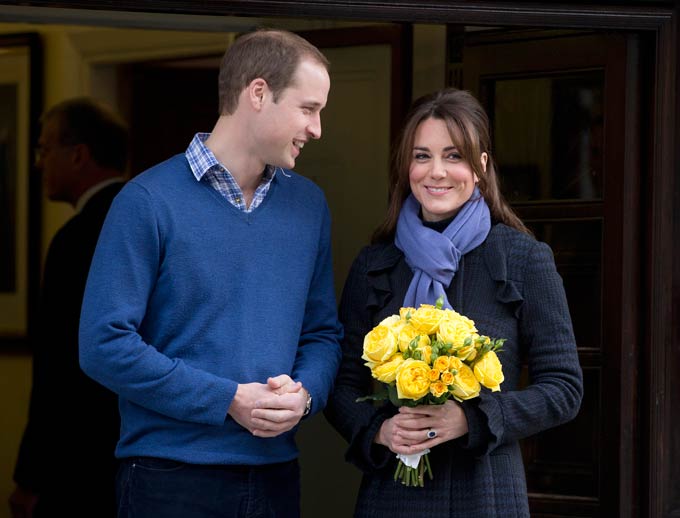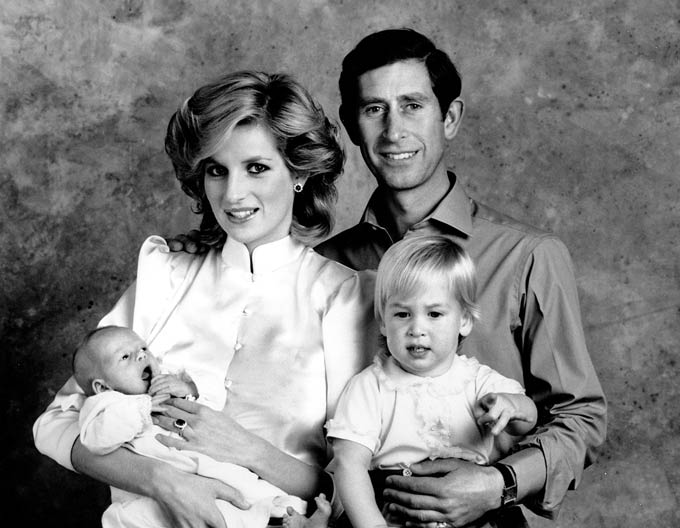As the country prepares to celebrate the birth of The Duke and Duchess of Cambridge’s first child, we look back at four generations of Royal births.

The Queen is naturally delighted at the prospect of becoming a great-grandmother for the third time this summer. The Duke and Duchess of Cambridge’s baby might be the world’s most eagerly anticipated newborn but for the Royal Family, the new arrival will have an added poignancy. For Her Majesty, it is more personal than merely signalling a new era for the House of Windsor.
Having largely missed out on seeing her grandchildren growing up because of spending half of each year abroad, The Queen, at nearly 87, finally has more quality time to spend with the newest members of her family. Of course she works every day, but these days foreign tours are few and far between and confined to a week at most.
She also spends most weekends at Windsor Castle, her ‘home’, (as opposed to her ‘office’ at Buckingham Palace) where there is a constant stream of visitors to see ‘Granny’. The Earl and Countess of Wessex’s children Lady Louise Windsor, nine, and Viscount Severn, five, The Queen’s youngest grandchildren, are so often to be found at Windsor that staff have grown used to stepping over tricycles in the hallway.

While both she and the Duke of Edinburgh may have appeared aloof as parents, opting to go on lengthy tours without their very young children, The Queen’s parents were very hands-on thanks to George VI being ‘the spare to the heir’ rather than King when they were bringing up the young princesses before the abdication.
Elizabeth and Bertie, as they were then known, were thoroughly modern parents for their time. Utterly devoted to Elizabeth and Margaret, they played with their daughters, bathed them and read them bedtime stories, rather than being overly reliant on nannies.
The Queen’s sense of purpose, even at a very young age, did not go unnoticed, not least by her father who compared her to Queen Victoria: “From the first moment of talking, she showed so much character that it was impossible not to wonder whether history would repeat itself.”
Winston Churchill wrote in his diary after staying at Balmoral as a guest of King George and Queen Mary in September 1928: “There is no one here at all, except the family, the household and Princess Elizabeth – aged two. The latter is a character. She has an air of authority and reflectiveness astonishing in an infant.”
The Queen showed the pride of any first-time mother in letters she wrote a month after Prince Charles was born in 1948. “The baby is very sweet, and Philip and I are so enormously proud of him,” she gushed in a handwritten note to her second cousin, Lady Mary Cambridge. “I still find it hard to believe I have a baby of my own!” she exclaimed. The birth of Charles, a future king, shortly after the end of World War II was a great boost to the country.
In another letter to the same recipient in 1960, the Queen spoke in equally affectionate terms about the birth of Prince Andrew, often said to be her favourite child and the baby she had for herself. “The baby is adorable, and is very good and is putting on weight well,” she enthused. “Both the older children are completely riveted by him, and all in all, he’s going to be terribly spoilt by all of us, I’m sure!”
The birth of The Queen’s first grandchild, Peter Philips, on 15 November 1977 took the Royals into new territory. Princess Anne did not want either her son nor her daughter Zara, born four years later, to have royal titles so baby Peter was therefore the first legitimate grandchild of a monarch to be born without a title or courtesy style for more than 500 years.
The quest for ‘normality’ for royal babies continued in earnest for the births of Princes William and Harry, in 1982 and 1984 respectively. This has often been credited solely to their mother Princess Diana but Charles also played his part.
Having disliked boarding at the remote Scottish school Gordonstoun so much he likened it to “Colditz in kilts”, Charles was more than happy to follow his wife’s lead in choosing to educate their sons closer to home – at Ludgrove Preparatory School in Berkshire and then Eton College in Windsor. In fact the Queen Mother, who favouritised Charles above all her grandchildren – had wanted that for the young prince himself, fearing him too sensitive to be packed off to the Highlands. It was precisely for this reason that Philip sent him to the school he had attended as a boy in the hope it would give his eldest son much-needed confidence.

Although Charles was a hands-on parent in a way that only someone born into royalty can be, it was Diana who ultimately called the shots when it came to the children. According to an aide: “Charles could never understand why Diana wanted to take the boys out for burgers or to theme parks because he had never done it as a child. But Diana just wanted them to be as normal as possible.”
While Diana may have had a difficult birth with William, a 16-hour labour, it was nothing compared to what Sophie Wessex endured to have her first child. Having previously suffered an ectopic pregnancy, she nearly died giving birth to her daughter Louise after suffering a placental abruption, necessitating an emergency caesarian section. James was subsequently born by caesarian too, to avoid any further complications.
Of course it is still not known how Kate plans to have her baby, but one thing is certain – there will be a wealth of wisdom on hand from royal mothers (and fathers) on how best to bring up Baby Cambridge.
Camilla Tominey is the Royal Editor of the Sunday Express and contributed to our limited edition Elizabeth The Queen: Diamond Jubilee Souvenir Magazine. Copies can still be purchased from the BRITAIN shop.






 © 2024
© 2024